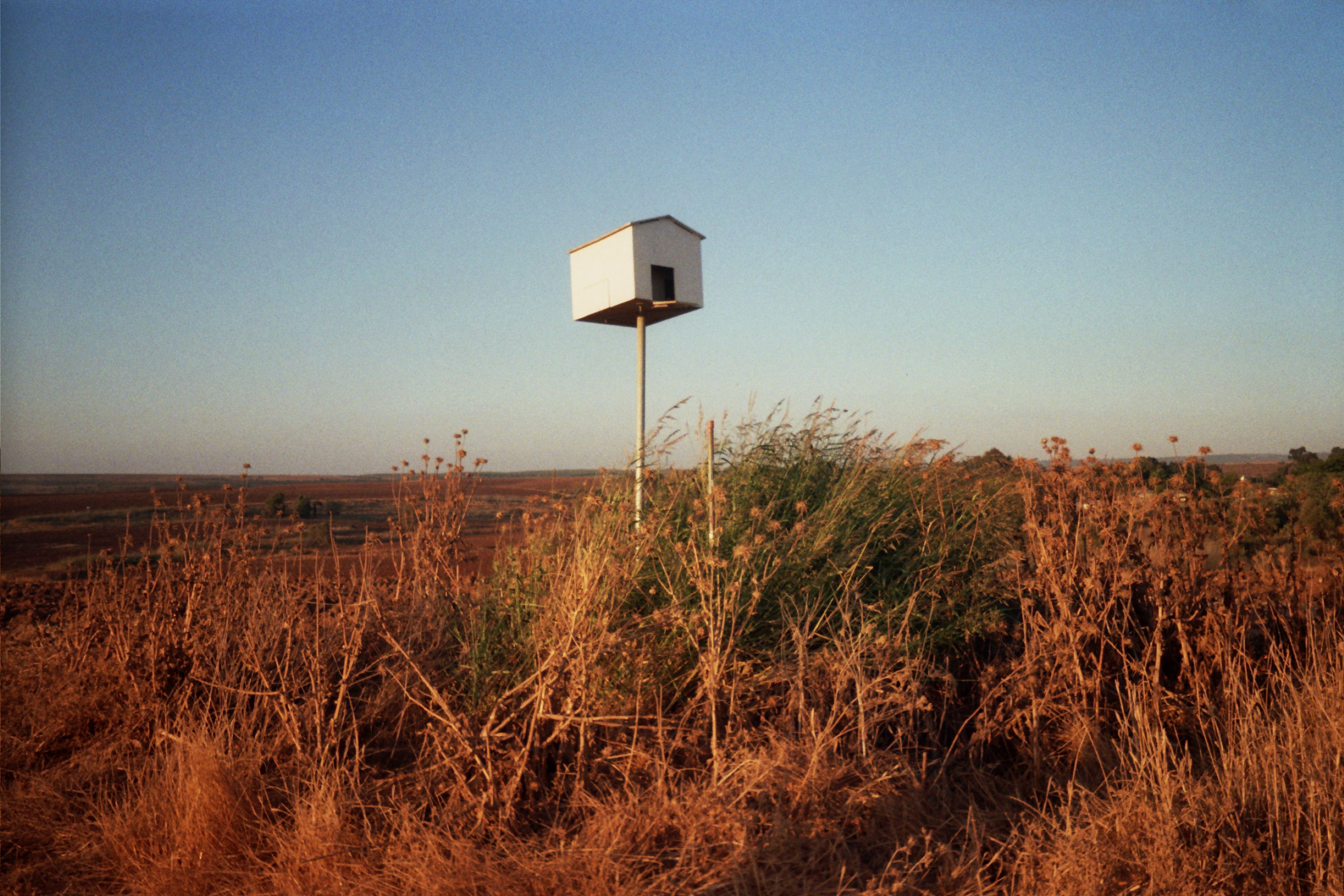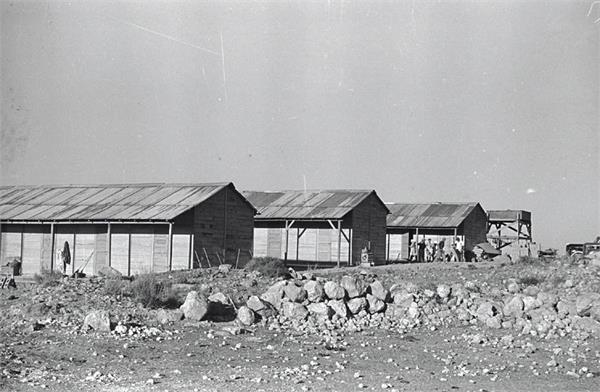Gal-On on:
[Wikipedia]
[Google]
[Amazon]
 Gal On ( he, גַּלְאוֹן, גל און, lit. ''Wave of Strength'') is a
Gal On ( he, גַּלְאוֹן, גל און, lit. ''Wave of Strength'') is a
 The core group, or ''gar'in'', that would eventually found the kibbutz was formed from members of the Hashomer Hatzair Zionist Youth Movement in Poland. The original nine founders of the kibbutz came to the land of Israel in 1939, originally settling in
The core group, or ''gar'in'', that would eventually found the kibbutz was formed from members of the Hashomer Hatzair Zionist Youth Movement in Poland. The original nine founders of the kibbutz came to the land of Israel in 1939, originally settling in
 During the
During the
 A factory was established in the first days of the kibbutz, which was, at the time, the first factory in the country that produced steel tools using modern methods. After many years, the factory was shut down and a box factory was established in its place, but it too eventually closed. Years later, the kibbutz bought a fan factory that was for sale in Ramla. This factory played an important role in the kibbutz economy for many years, until the fan market was inundated by cheap Chinese fans. The factory was converted to electrical motor production, but it too succumbed to the Chinese market and closed down. Today, the kibbutz survives mainly on income from agriculture and the salaries of kibbutz members working outside the kibbutz. Primary crops include wheat, watermelons, and sunflowers. The kibbutz also raises cows and chickens. In addition, the kibbutz's guest house is a significant source of income.
A factory was established in the first days of the kibbutz, which was, at the time, the first factory in the country that produced steel tools using modern methods. After many years, the factory was shut down and a box factory was established in its place, but it too eventually closed. Years later, the kibbutz bought a fan factory that was for sale in Ramla. This factory played an important role in the kibbutz economy for many years, until the fan market was inundated by cheap Chinese fans. The factory was converted to electrical motor production, but it too succumbed to the Chinese market and closed down. Today, the kibbutz survives mainly on income from agriculture and the salaries of kibbutz members working outside the kibbutz. Primary crops include wheat, watermelons, and sunflowers. The kibbutz also raises cows and chickens. In addition, the kibbutz's guest house is a significant source of income.
Official websiteGal On guesthouse
{{Authority control Populated places established in 1946 Kibbutzim Kibbutz Movement Yoav Regional Council Populated places in Southern District (Israel) 1946 establishments in Mandatory Palestine Polish-Jewish culture in Israel
 Gal On ( he, גַּלְאוֹן, גל און, lit. ''Wave of Strength'') is a
Gal On ( he, גַּלְאוֹן, גל און, lit. ''Wave of Strength'') is a kibbutz
A kibbutz ( he, קִבּוּץ / , lit. "gathering, clustering"; plural: kibbutzim / ) is an intentional community in Israel that was traditionally based on agriculture. The first kibbutz, established in 1909, was Degania. Today, farming h ...
in southern Israel. Located in the Shephelah, it falls under the jurisdiction of Yoav Regional Council. In it had a population of .
The kibbutz is associated with the Hashomer Hatzair
Hashomer Hatzair ( he, הַשׁוֹמֵר הַצָעִיר, , ''The Young Guard'') is a Labor Zionist, secular Jewish youth movement founded in 1913 in the Kingdom of Galicia and Lodomeria, Austria-Hungary, and it was also the name of the group ...
movement and its Kibbutz Artzi settlement organisation (now part of the Kibbutz Movement
The Kibbutz Movement ( he, התנועה הקיבוצית, ''HaTnu'a HaKibbutzit'') is the largest settlement movement for kibbutzim in Israel. It was formed in 1999 by a partial merger of the United Kibbutz Movement and Kibbutz Artzi and is made ...
). Established as part of the 1946 11 points in the Negev
11 points in the Negev ( he, 11 הנקודות or he2, אחת-עשרה הנקודות, ''Akhat-Esre HaNekudot'') refers to a Jewish Agency plan to establish 11 settlements in the Negev in 1946 prior to the partition of Palestine and the establishm ...
settlement drive, it is located approximately ten kilometers north east of Kiryat Gat and two kilometers east of Beit Guvrin. The kibbutz is administered as part of the Yoav Regional Council.
Environs
Gal On stands on a hill approximately twenty kilometers from the Mediterranean Sea. The hill on which it is located borders the Guvrin stream, an auxiliary ofLachish River
Lakhish River ( he, נחל לכיש, ''Naḥal Lakhish'') is a river in Israel that flows into the Mediterranean Sea at the city of Ashdod. It is also known as Wadi Kabiba (inland section) and Wadi Sukhrir (Ashdod section) in Arabic. History
The Dr ...
. With average rainfall and temperate weather, Gal On’s Mediterranean climate facilitates agricultural production.
History
 The core group, or ''gar'in'', that would eventually found the kibbutz was formed from members of the Hashomer Hatzair Zionist Youth Movement in Poland. The original nine founders of the kibbutz came to the land of Israel in 1939, originally settling in
The core group, or ''gar'in'', that would eventually found the kibbutz was formed from members of the Hashomer Hatzair Zionist Youth Movement in Poland. The original nine founders of the kibbutz came to the land of Israel in 1939, originally settling in Ein HaMifratz
Ein HaMifratz ( he, עֵין הַמִּפְרָץ, ''lit.'' Bayview) is a kibbutz near Acre in northern Israel. Located on the Mediterranean coast, it falls under the jurisdiction of Mateh Asher Regional Council. As of it had a population of ...
, near Haifa. Once their group grew to thirty, they transferred to Giv'at Michael
, wiktionary:בית, :he:בית, house
*
*
*
*
E
, wiktionary:עין, spring, fountain
*
*
, wiktionary:עמק, :he:עמק, valley
*
G
, wiktionary:גן, :he:גן, "garden"
*
, wiktionary:גבעה, :he:גבעה ...
northwest of Ness Ziona to train for settlement (''hakhshara''). The group worked to build roads as well as harvest fruit in the neighboring orchards in the developing area. Despite their efforts, the group's economic circumstances were dire. Just after the close of Yom Kippur between 5–6 October 1946, the group moved to their current location next to kibbutz Gat in the Shephelah as one of the 11 points of settlement established in the area that night. The kibbutz was established with the help of funding from Keren Hayesod on land purchased by the Jewish National Fund
Jewish National Fund ( he, קֶרֶן קַיֶּימֶת לְיִשְׂרָאֵל, ''Keren Kayemet LeYisrael'', previously , ''Ha Fund HaLeumi'') was founded in 1901 to buy and develop land in Ottoman Syria (later Mandatory Palestine, and subseq ...
.
Early statehood
 During the
During the 1948 Arab–Israeli War
The 1948 (or First) Arab–Israeli War was the second and final stage of the 1948 Palestine war. It formally began following the end of the British Mandate for Palestine at midnight on 14 May 1948; the Israeli Declaration of Independence had ...
, the kibbutz was isolated and attacked by the Egyptian Army. Egyptian troops advanced within a kilometer of Gal On, but efforts by kibbutz members to lay minefields helped defend the kibbutz and maintain Israel's southern front during the war. In late October 1948, the kibbutz served as a base for the Israel Defense Forces
The Israel Defense Forces (IDF; he, צְבָא הַהֲגָנָה לְיִשְׂרָאֵל , ), alternatively referred to by the Hebrew-language acronym (), is the national military of the Israel, State of Israel. It consists of three servic ...
' Operation Yoav as it was attacked by Arab forces, resulting in the capture of Beit Jibrin
Bayt Jibrin or Beit Jibrin ( ar, بيت جبرين; he, בית גוברין, translit=Beit Gubrin) was a Palestinian village located northwest of the city of Hebron. The village had a total land area of 56,185 dunams or , of which were ...
in the east. In 1949, kibbutz Beit Guvrin was established nearby.
The kibbutz's population was boosted by a group of Holocaust survivors who had arrived on the refugee ship Exodus in 1947. In 1951, a large group of Hashomer Hatzair members arrived from North America
North America is a continent in the Northern Hemisphere and almost entirely within the Western Hemisphere. It is bordered to the north by the Arctic Ocean, to the east by the Atlantic Ocean, to the southeast by South America and the Car ...
. A group of Israeli Hashomer Hatzair members joined ten years later in 1961. Additionally, the kibbutz also absorbed a small group of members of Mapam
Mapam ( he, מַפָּ״ם, an acronym for , ) was a left-wing political party in Israel. The party is one of the ancestors of the modern-day Meretz party.
History
Mapam was formed by a January 1948 merger of the kibbutz-based Hashomer Hatz ...
from Uruguay.
2000–present
In the year 2000, the kibbutz faced economic hardships: The kibbutz was losing money, and kibbutz children were leaving for the cities. Consequently, Gal On members decided to change its ways. Kibbutz members decided to adopt a new “security net.” This stabilized the economic situation, but had little effect on demographics. Although more kibbutz children are staying to live on the kibbutz, few become kibbutz members. Their economic situation was exacerbated by a critical lack of water. Gal On had considerably large tracts of land that could not be cultivated because of the shortage. The kibbutz had a well that supplied 60,000 cubic meters of water a year—almost all of which was used for drinking water and daily needs. Only when the Israeli National Water Carrier was completed was it possible to expand the cultivated areas. In 2020, a 12th century Canaanite fortress excavated near Gal On was opened to public.Industry and agriculture
 A factory was established in the first days of the kibbutz, which was, at the time, the first factory in the country that produced steel tools using modern methods. After many years, the factory was shut down and a box factory was established in its place, but it too eventually closed. Years later, the kibbutz bought a fan factory that was for sale in Ramla. This factory played an important role in the kibbutz economy for many years, until the fan market was inundated by cheap Chinese fans. The factory was converted to electrical motor production, but it too succumbed to the Chinese market and closed down. Today, the kibbutz survives mainly on income from agriculture and the salaries of kibbutz members working outside the kibbutz. Primary crops include wheat, watermelons, and sunflowers. The kibbutz also raises cows and chickens. In addition, the kibbutz's guest house is a significant source of income.
A factory was established in the first days of the kibbutz, which was, at the time, the first factory in the country that produced steel tools using modern methods. After many years, the factory was shut down and a box factory was established in its place, but it too eventually closed. Years later, the kibbutz bought a fan factory that was for sale in Ramla. This factory played an important role in the kibbutz economy for many years, until the fan market was inundated by cheap Chinese fans. The factory was converted to electrical motor production, but it too succumbed to the Chinese market and closed down. Today, the kibbutz survives mainly on income from agriculture and the salaries of kibbutz members working outside the kibbutz. Primary crops include wheat, watermelons, and sunflowers. The kibbutz also raises cows and chickens. In addition, the kibbutz's guest house is a significant source of income.
References
External links
Official website
{{Authority control Populated places established in 1946 Kibbutzim Kibbutz Movement Yoav Regional Council Populated places in Southern District (Israel) 1946 establishments in Mandatory Palestine Polish-Jewish culture in Israel